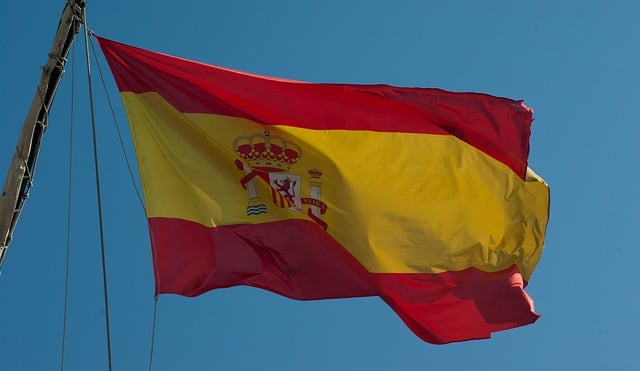Spanish bureaucracy can be a little convoluted, to say the least, and getting Spanish citizenship can take a seriously long time.
In fact, Spain is one of the European countries where getting citizenship through residency can take the longest – 12 to 13 years if you factor in processing times. The general rule is that if you want to apply for Spanish citizenship, you will have to reside legally in Spain without long absences for ten years.
Nationals from Ibero-American countries where Spanish or Portuguese is spoken including Argentina, Bolivia, Brazil, Chile, Colombia, Costa Rica, Cuba, Ecuador, El Salvador, Guatemala, Honduras, Mexico, Nicaragua, Panama, Peru, Paraguay, the Dominican Republic, Uruguay and Venezuela, as well as nationals of the Philippines, Equatorial Guinea, Andorra or Portugal, can, however, apply for Spanish nationality after legally residing in Spain for two years.
Marrying a Spaniard also means that the process can be speeded up – from 10 years to just one.
Despite that, Spain granted 144,800 new citizenships in 2021, which represented 17 percent of all naturalisations in the whole of the European Union.
READ ALSO: Spain gave citizenship to more people than any EU country in 2021
But aside from being from an Ibero-American country or marrying a Spaniard, the entire process can take a long time.
So if you’re considering applying (and have been in Spain legally for long enough), you’ll want to be sure that your application is absolutely watertight and without any mistakes – prolonging the process is the last thing you’d want to do, after all.
The Local has outlined the most common mistakes people make on their citizenship application (and how to avoid them) below.
READ ALSO: How to quickly get a UK passport for a child born in Spain
Common mistakes to avoid
1. Not having a valid passport
It seems obvious, but without a valid passport, you won’t be able to proceed with a citizenship application. You need a valid passport, and if your passport has expired and is in the process of renewal (when you apply) you must provide some documentation to prove it is in the process of being renewed.
Once you receive the renewed passport, you’ll be able to add it to your application.
2. Failure to provide all passport pages
Staying with the passport theme, it’s very important that when asked for a copy of your passport as part of the application, you must copy every single page, even if they’re blank or without any information or stamps. Do not just apply with the photo page.
Copies should be done professionally and every page must be legible with the page number.
READ ALSO: How foreigners can get fast-track citizenship in Spain
3. Not uploading CCSE and DELE grades
The Conocimientos constitucionales y socioculturales de España (CCSE) is the exam you must take to prove your understanding of the Spanish constitution, culture and society in order to obtain citizenship.
The DELE, on the other hand, is the Spanish exam you need to take to prove you have a basic grasp of the language.
When submitting your application online, the Spanish Ministry of Justice offers the option of transferring your grades directly from the Instituto Cervantes, the body that organises the exams.
Convenient though this is, Spanish immigration experts suggest also uploading your certificates themselves as part of the application, in addition to transferring the grades, as a way to avoid any kind of technical error, either by the Instituto Cervantes or by the Ministry itself, that could slow the application down.
Spanish tech systems and online portals are, after all, notoriously unreliable.
However, if you don’t choose the auto-transfer option at all, the Ministry will have to request these documents, which will further delay the application, so be sure to cover your bases and do it both ways.
4. Spelling mistakes
Again, another obvious one, but something that slows down a lot of applications. Make sure yours is totally free of errors, above all on the NIE/TIE, name, surname, residence dates, parents’ names and date of birth sections.
Although the government always cross references the application data against those they already have in their possession, such as the NIE/TIE, passport, padrón, and so on, getting your application right the first time around will help speed up the process.
READ ALSO: How long are waiting times for the Spanish citizenship process?
5. Applying with a criminal record
Applying for Spanish citizenship with a criminal record will really hurt your application. Any applicant who has a criminal or police record will almost certainly be denied. Applicants must have a clean criminal record, both in Spain and their country of origin.
Some immigration lawyers in Spain even suggest that things such as unpaid speeding tickets or having failed a breathalyser test could lead to your application being rejected.
6. Expired criminal record certificate
With that in mind, applying for citizenship with an expired criminal record certificate (something you need to prove you don’t have a criminal record or outstanding charges) works in the same way as passports. That is to say: it cannot have expired.
Depending on where you’re from and which company issues the background check and certificate, sometimes they don’t have expiration dates. In this case, it is generally assumed they are valid for six months from the date of issue, according to the official government advice:
“[…] In order to determine the validity in the case of certificates, the term of validity stated in the document itself will be taken into account. In the case of criminal record certificates that do not state a period of validity, it will be understood that they are valid for six months from the date of issue“.
7. Starting your application before the legal residence has elapsed
If the required time of legal residence has not been fulfilled (whether it be two or ten years) your application for Spanish citizenship will be rejected.
So, let’s say you’ve lived permanently in Spain for nine years and you’re now just one year from the legally required residency period and want to start the application ahead of time, no can do, the requirements of legal and continuous residence must be met BEFORE the application is processed.
8. Not living with (or registering) with your partner for long enough
Although it’s true that marrying a Spaniard is the quickest route to citizenship, it’s not quite as simple as it sounds.
An important but misunderstood nuance of this rule is that you not only have to marry a Spanish citizen but fulfill time requirements too. You must have legally lived together for one year, sharing the same address on the empadronamiento, in order to be able to apply for Spanish nationality through marriage.
If the Ministry of Justice doesn’t see sufficient evidence for this or decides that the spouses do not live together, the legal residence will be considered not effective and the application denied.



 Please whitelist us to continue reading.
Please whitelist us to continue reading.
Member comments